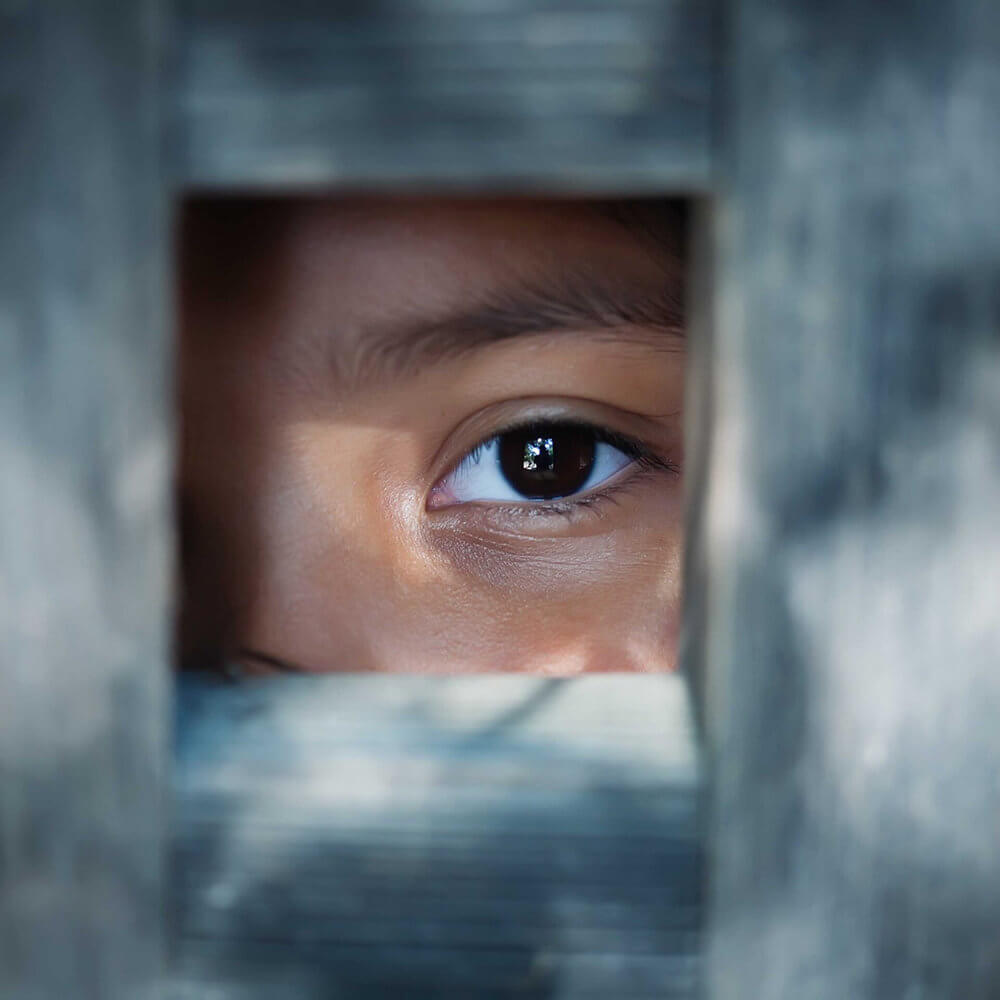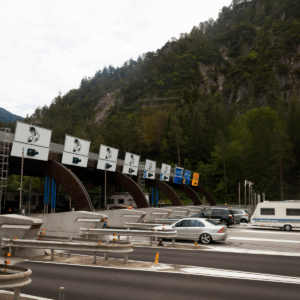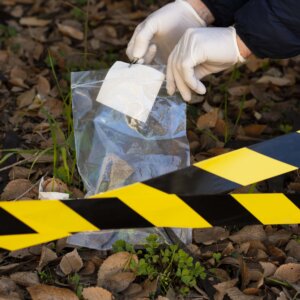
COVID-19 and Crime: The Impact on Human Trafficking
Human trafficking in 2021 and the COVID-19 pandemic changed the way investigators and detectives operate and view the crime. Traffickers changed their patterns for targeting individuals, making it more challenging for targets of trafficking to get help. With an influx of vulnerable people, traffickers gained opportunities to prey on those struggling in the pandemic.
Types of Human Trafficking
Human trafficking is the exploitation of people through force, coercion or false pretenses. It can take many forms, from nonconsensual sexual services to forced labor. While people of any gender, race, age or nationality can become the victims of human trafficking, traffickers might target more vulnerable groups, including:
- Racial or ethnic marginalized individuals.
- Those with economic struggles.
- Those with mental or psychological hardships.
- Individuals in social isolation.
Traffickers might even take advantage of political states or natural disasters to lure victims into their systems, such as the pandemic. Other common scenarios they often use are the promise of employment, romantic relationships or religious meetings. Traffickers depend on spreading false information because it allows them to pull in vulnerable individuals.
According to the United Nations Office on Drugs and Crime (UNODC), there are four major types of human traffickers, divided by how they operate:
- Individual: Individual attackers work alone and often target single individuals. This type makes up around 11% of all traffickers.
- Opportunistic: Opportunistic traffickers work in groups of two or more, still targeting one person like individual traffickers. About 14% of all traffickers are opportunistic. They don’t have a systemic structure to support several crimes, so they might only attack a few times.
- Business: Business traffickers work in groups of three or more to systemically traffic several individuals. They have the internal structure to handle continual trafficking, and trafficking is a core component of their operations. Business-type traffickers are the most common, comprising 57% of all traffickers.
- Governance: Another systemic type, governance types preside over communities or territories and use fear and terror tactics to control individuals. One way governance-type traffickers might operate is by moving specific ethnic groups to internment camps where they must isolate from general society and do forced work. This type makes up 18% of traffickers.
UNODC also offers information about the situation of trafficking victims globally. Around half of all victims are forced into nonconsensual sexual exploits, while 38% are forced into labor. The most common industries for forced labor include domestic work, like cleaning services, construction, fishing and agriculture.
Is Human Trafficking Increasing Because of the COVID-19 Pandemic?
The emergence of COVID-19 created hardships for many people as businesses and schools shut down and life moved online. While many might believe that social distancing and online activity would decrease human trafficking efforts, the pandemic caused the opposite effect. In 2020, there was a global rise in human trafficking caused by the increased vulnerability that socio-economic struggles put on at-risk groups.
1. Increased Vulnerability From Economic Hardship
The pandemic caused a rise in financial struggles for individuals, with around 81% of the global workforce affected by business shutdowns or the switch to remote work. While many sectors were able to move online, many individuals lost their jobs, making them unable to support themselves or their families.
This economic hardship can increase vulnerability to human trafficking for people without work or in need of additional labor. Traffickers use these individuals’ desperate situations to lure them in with the promise of work, allowing traffickers to reach, contact and attack victims.
Economic problems can make it more dangerous for current trafficking victims, as well. Traffickers might force their victims to work increased hours to earn additional income with little protection or social distancing to protect them from COVID-19 exposure. People continue to pay for sex services throughout the pandemic, and many sex traffickers will advertise services as consensual while forcing victims to work.
Longer hours, malnutrition, exposure to abuse and reliance on substances can make it more difficult for trafficking victims to recover from COVID-19. Additionally, many traffickers withhold medical treatment and services from victims, increasing the danger of contracting COVID-19.
2. More Online Activity and Human Trafficking
As the pandemic made it unsafe for individuals to meet in large groups, companies and schools moved online to try and continue work and learning in a different environment. However, increased activity online for kids has made them more susceptible to interacting with human traffickers online. In 2020, there was a 98.66% increase from 2019 in online enticement reports to the National Center for Missing and Exploited Children.
With longer hours online for classes and homework, children are increasing their hours online, joining social media platforms like TikTok, Twitter and Instagram to connect with friends and provide them with entertainment. Traffickers are taking advantage of this increased online presence and activity to contact, groom and traffic children into child labor, sex work and marriages.
Many adults turned to dating apps during the pandemic to continue their romantic habits, even if they couldn’t meet people in person. Traffickers have also turned to these online spaces to prey on individuals and victimize them. They can use online apps to lure people into fake relationships, even pretending to be other people through the practice of catfishing. If individuals choose to meet with people they talk with online, it can lead to various types of human trafficking.
While much of the increase in human trafficking during the pandemic came from the influx of individuals online, creating more opportunities for traffickers, many traffickers used the increased time at home to develop harmful online content of their current victims. Without the chance to go to work or outdoor spaces, traffickers can stay at home and make videos or pictures of victims, further traumatizing them.
Additionally, traffickers can use the increased presence of vulnerable individuals on social media to continue to spread false information. Social media apps are notorious for making it challenging to fact-check information, creating a perfect environment for traffickers to share misinformation and lure in victims.
3. Child Trafficking in the Pandemic
Children are already incredibly vulnerable groups because of the difficulty for them to defend or provide for themselves. They rely on the care of the adults around them to help them navigate the world. Without the guidance or protection from the adults in their lives, kids can become more susceptible to crimes like human trafficking.
In the pandemic, increased online activity has already led to more children falling victim to human trafficking. Further, one in six parents never or rarely discuss proper online safety with their children. Others might not be aware of what their kids are doing online and what dangerous sites they might be encountering.
However, there are additional risks to kids in the pandemic other than online activity. Financial instability can lead to adults forcing children into human trafficking in the form of child marriages and labor. Child marriages reduce the number of people parents need to support financially or feed, and some traffickers pay parents for the right to marry their child.
4. The Dangers of Social Distancing and Closures for Current Victims
While many might think that social distancing and limited public spaces would discourage and decrease human trafficking and its effects, the COVID-19 pandemic highlights that the opposite is true. There is a strong social impact of human trafficking — social distancing might cause human traffickers to move online, but it also makes it harder for victims to escape their captors and receive help.
The closures of schools and hospitals limiting their resources make it harder for people to identify possible human trafficking victims. Teachers can receive training to recognize the signs of trafficking in their students, allowing them to intervene and get kids the help they need. Online schools make it more challenging for teachers to see these signs when students have their cameras off or use online chats.
Doctors, nurses and other medical professionals are great resources for identifying and helping individuals who are victims of trafficking. Like teachers, health care professionals know the common signs of trafficking victims and have protocols to help keep them safe or distance them from their abusers while receiving medical attention. However, the pandemic put increased strain on hospital staff and resources, causing them only to treat emergencies or COVID-19 patients.
The public also plays a significant role in helping victims get help. Crowded spaces can allow victims to signal for help without their abuser noticing, with cases of victims writing subtle notes or making small gestures that get the attention of passersby or local employees. Social distancing increases individual isolation, meaning traffickers limit their victims’ contact with other people and even keep them inside longer.
5. Fewer Social Resources to Help Human Trafficking Survivors
There are many adverse effects of human trafficking on victims, including extreme trauma. They need critical care to re-enter society safely, from medical and psychological treatment to employment and housing opportunities.
There are several types of resources available to survivors to help ease their transition back into society, including:
- Safehouses and shelters.
- Entry-level jobs.
- Support groups and counseling.
- Childcare services.
Many of these services closed at the start of the pandemic to ensure the safety of employees and individuals, which can negatively impact trafficking survivors. Safehouses and shelters are pivotal for helping survivors escape abusive situations where they might be dependent on their traffickers, giving these survivors somewhere safe to live and receive basic help while they start to recover. The pandemic caused many places to limit the number of beds they can offer, limiting survivors’ options.
Entry-level jobs help survivors start working to support themselves after victimization, especially if they don’t have the necessary skills or work experience to get other jobs. The start of the pandemic limited the number of these jobs available, and many organizations stopped hiring to restrict the number of employees they have in-store or need to train online.
Support groups, counseling and childcare services also experienced decreased availability. These organizations often rely on large staff numbers, and many stopped momentarily to protect employees. While many counseling and other services exist in online formats — from virtual sessions with therapists to hotlines survivors can call — it can be challenging for survivors with little resources to access the internet.
The pandemic and the resulting economic problems also impact social resources that rely on donations from benefactors. Many organizations that help survivors and victims are non-profits, so they need volunteers and donors to keep them operating smoothly and offering more services. Some governments are even redirecting funds away from anti-trafficking departments and units to support other internal functions in the face of COVID-19.
COVID-19 has caused these non-profit and government groups to receive fewer funds than usual, making it more challenging to help trafficking survivors and provide them with the services and goods they need to recover. Many organizations had to cancel critical fundraising events in the early pandemic because of group guidelines and limitations. While there is a lot of technology now that offers virtual and hybrid event options, some organizations had to close.
6. Fewer Legal Resources Available for Survivors
Many survivors struggle with legal aspects that have become more challenging due to the pandemic. Traffickers often move victims across borders, and afterward, survivors need to declare themselves as such to help gain access to services and protection until they can return to their home country.
However, many processes have closed or shut down during the pandemic, making it challenging for victims to receive or renew papers identifying them as survivors. With borders shut, victims have to stay in that country, preventing them from reconnecting with loved ones and increasing feelings of isolation.
Courts are another aspect of legal systems slowing down during the pandemic. Many local court systems shut down, pausing legal proceedings. While some courts offer online services, the closures can unnecessarily lengthen trials for human trafficking cases, giving survivors more time to decide not to press charges or work with prosecutors. This can also cause victims to continue to relive their trauma as they await trial, preventing them from getting justice while traffickers go without consequences.
7. Survivors Experience Increased Chances to Become Victims Again
With the lack of resources available to survivors because of the COVID-19 pandemic, survivors have an increased possibility of becoming victims again. Traffickers target vulnerable groups, and recovering survivors are in a very vulnerable state.
The same reasons that make people more likely to become victims, like lack of jobs or support, can lead to survivors getting trafficked again. Traffickers might be able to sense their desperation or vulnerability as survivors search for work or education opportunities and take advantage of previous victims again.
How Kaseware Can Help You Fight Human Trafficking
With human trafficking on the rise globally, people need to make changes and create new ways to help victims and survivors. While human traffickers might have moved online, parents and teachers can educate young children about internet safety to keep them from dangerous sites where they might encounter predators or offer them tips to practice good online security.
Investigative organizations can also invest in the right tools to help locate and liberate human trafficking victims. Especially when many COVID-19 crimes caused unique crime preventative measures, investigative departments can use online search tools to help identify possible victims and access the darker sides of the internet.
Kaseware offers a single, centralized platform that detectives and investigators can use to help lower human trafficking and assist these vulnerable victims. Designed by FBI investigators, our solutions understand the unique needs of detectives, allowing for increased collaboration across departments or agencies. It scales to meet your organization’s size and usage and offers secure web-based services you can access anywhere safely.
Learn More
Schedule a demo with Kaseware today and discover how our solution enables you to help the victims of human trafficking in the face of a global pandemic.








